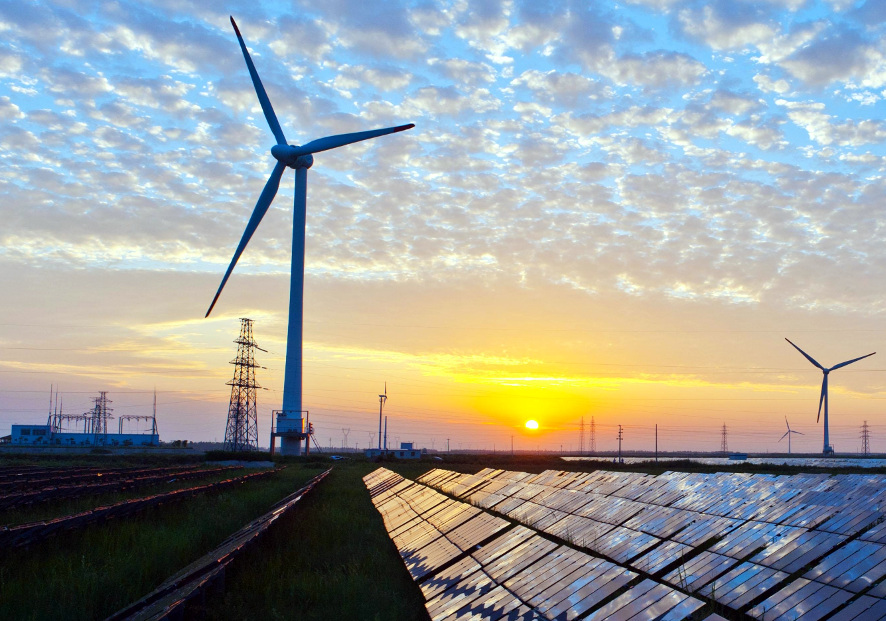© Copyright 2023 Quick Creator - All Rights Reserved
The AI-Powered Green Energy Revolution: Benefits, Challenges, and Opportunities

Introduction
The world is facing a pressing need to transition from traditional sources of energy to cleaner alternatives. The effects of climate change and the rising demand for energy have made it imperative to shift towards green energy sources that are sustainable and environmentally friendly. This transition offers numerous benefits, including reducing carbon emissions, improving air quality, creating new jobs in the renewable energy sector, and enhancing global energy security. Furthermore, as technology continues to advance rapidly, artificial intelligence (AI) has become an increasingly important tool in facilitating this transition by optimizing renewable power generation systems and improving their efficiency. With AI-powered green solutions on the rise, there is great potential for innovation in this field that can lead us towards a brighter future with clean energy powering our world.
AI and the Transition to Clean Energy
As the world continues to grapple with climate change, the need for a transition to clean energy cannot be overemphasized. Fortunately, artificial intelligence (AI) and machine learning are emerging as powerful tools that can accelerate this transition. AI has already demonstrated its potential in various sectors such as healthcare, finance, and transportation. Similarly, AI is being used in renewable energy and energy efficiency to optimize performance, reduce costs and carbon footprint.
AI and Renewable Energy
Renewable energy sources such as wind, solar, hydroelectricity have enormous potential but also pose significant challenges regarding their integration into existing power systems. The intermittent nature of these sources makes it difficult to predict accurately when they will produce electricity or not. However, using AI technologies like machine learning algorithms can help make better predictions on how much power will be produced by renewables at any given time. This predictive capability allows grid operators to balance supply and demand more effectively while reducing reliance on traditional fossil fuel-based plants.
One example of this is GE's Digital Wind Farm platform which uses machine learning algorithms to analyze data from sensors installed on wind turbines across the globe continuously. By analyzing weather patterns as well as historical data about turbine performance under different conditions like temperature changes or gusts of wind speeds etc., this platform develops models that enable operators to identify trends early enough before they become problems.
AI and Energy Efficiency
Energy efficiency refers to strategies designed for minimizing energy waste without sacrificing comfort or productivity levels. It involves identifying opportunities where less energy could be used in performing tasks than previously done without affecting quality output negatively.
Machine learning algorithms provide an excellent opportunity for improving building management systems' effectiveness by optimizing heating/cooling schedules based on occupancy patterns within buildings—leading companies developing sophisticated software platforms powered by AI that proactively manage building control systems automatically.
For instance: Google’s DeepMind technology was deployed at one of Google’s UK offices; it learned how certain parts of the office were being used and then adjusted the cooling and heating accordingly to maximize energy efficiency. This led to a 40% reduction in energy consumption.
Challenges and Ethical Considerations
As AI continues to play a pivotal role in the green energy revolution, it is essential that we also consider some of the challenges and ethical considerations surrounding its use. One of the main challenges is the potential for AI to lead to job displacement in certain sectors such as manufacturing and transportation. Additionally, there are concerns about data privacy and security when using AI-powered systems to manage renewable energy resources.
Furthermore, there are ethical considerations regarding AI's impact on society and the environment. For example, as renewable energy becomes more accessible through AI-powered technologies, there may be unintended consequences such as increased demand for rare earth minerals needed for components like batteries or solar panels. This could potentially lead to environmental degradation and harm local communities where these materials are sourced.
Another challenge involves ensuring that access to clean energy solutions powered by AI does not exacerbate existing inequalities within society. As with any new technology or innovation, there is a risk that only those who can afford it will benefit from it while others are left behind.
In addition, we must consider potential biases in algorithms used by these systems which could perpetuate discrimination against certain groups of people based on factors like race or income level. It is important that developers take steps towards identifying and addressing bias during development phases so that these systems do not perpetuate harmful stereotypes or reinforce systemic inequalities.
Overall, while AI holds great promise for transforming our approach towards sustainable living through cleaner sources of power generation and efficient distribution networks; careful consideration needs to be given towards mitigating potential negative effects so that this transformation benefits everyone equally without harming individuals or communities along the way.
The Need for a Holistic Approach
In order to create a sustainable energy future, it is essential to adopt a holistic approach that combines AI with policy and market incentives. AI-powered technologies can play an important role in optimizing the use of renewable resources such as wind and solar power. However, technology alone cannot solve all the challenges associated with transitioning to green energy. Policy initiatives must be put in place to encourage investment in clean energy infrastructure and incentivize companies to reduce their carbon footprint. Market forces can also drive change by creating demand for green products and services, spurring innovation, and driving down costs. A combination of these factors is necessary to ensure that we are on track towards achieving a more sustainable future. By working together across sectors, policymakers, industry leaders, investors, and consumers can create a truly transformative shift towards cleaner energy sources while ensuring economic prosperity for all stakeholders involved.
